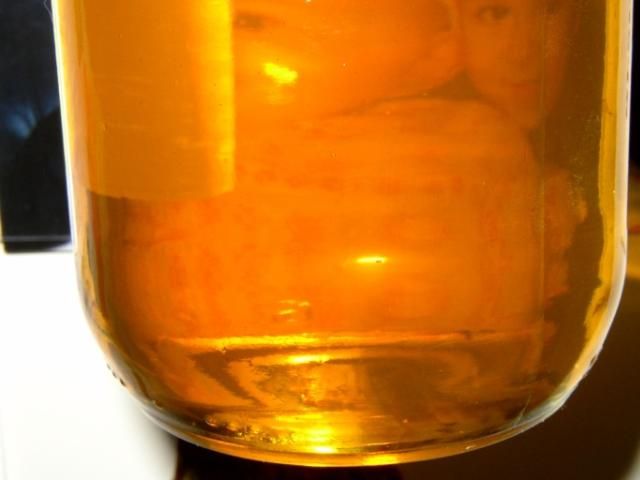
Credit: iStockphoto
Infant botulism is a disease caused by the spore-forming bacterium Clostridium botulinum. With an average of fewer than 100 reported cases per year in the US, infant botulism is considered to be a rare disease. The Infectious Disease Section and Microbial Diseases Laboratory of the California Department of Health have provided evidence that botulism spores in the immature infant intestinal tract may produce the actively growing stage of the bacterium Clostridium botulinum. The bacterium, in turn, produces a poison that can block nerve impulse transmissions.
Healthy adults and children over one year of age have a more mature digestive system that prevents the Clostridium bacteria from surviving. Foodborne botulism, while also rare, is different from infant botulism. In foodborne botulism, the toxin is pre-formed in food and then absorbed in the small intestine after the food is eaten, causing a severe reaction in as little as 6 hours.
Botulism spores are found many places in nature. These include in water, soil, dust, and even air. The spores are not harmful themselves, but in the absence of oxygen they germinate and the resultant bacteria produce a powerful toxin. Spores can persist on improperly processed foods, which is the reason canned vegetables are heated prior to packing. Bacterial spores in food are destroyed by high temperatures obtained only in the pressure canner (240°F–250°F). More than 6 hours is needed to kill the spores at boiling temperature (212°F). The toxin is destroyed by heating to 176°F or boiling for 10 minutes to 20 minutes.
Raw agricultural crops, however, are never heated. Many foods, even if heated or processed, once exposed to the air would be susceptible to re-infestation by botulism spores. Cumulative research on infant botulism to date, therefore, suggests that there is an unknown risk factor in feeding any raw agricultural product to infants under one year of age.
Public health officials have stated that honey is the one identified and avoidable source of C. botulinum spores. In a survey of honey in the United States, 10% of honey samples contained botulism spores, and other data suggest an association between honey consumption and infant botulism. That said, botulinum toxin has not been found in honey, nor would it be expected to be, since the high antimicrobial properties and osmotic effect of honey will prevent it from germinating, rendering the spores dormant for various lengths of time. The consumption of honey is typically in the raw form (not heated, pasteurized, sterilized, or irradiated), and honey can contain dormant (but living) botulism spores. The risk of infection comes from eating the honey and the spores colonizing the infant's undeveloped gut.
Since honey is a potential and avoidable source of Clostridium botulinum spores, the Center for Disease Control and Prevention (CDC), the American Academy of Pediatrics (AAP), and the National Honey Board (NHB) recommend that honey not be given to infants younger than 12 months of age. Honey should not be added to water, food, or formula fed to infants under 12 months of age. Furthermore, one should not dip a pacifier in honey prior to offering it to a child. It should be noted that botulism is not transmitted by breast milk. A breast feeding mother who eats honey will not pass the spores to her child.
These research findings in no way alter many published results that honey is a highly nutritious food source, is high in antioxidants, has antimicrobial properties, and is bactericidal. Only bacterial spores that are highly resistant to environmental stress can exist in honey, and they themselves are not typically harmful. Furthermore, Clostridium botulinum is not a disease of the honey bee, but rather the spores are a rare accidental contaminant carried into the hive on dust, water, or pollen from the environment.
The individual beekeeper should be prepared to answer questions responsibly about infant botulism and honey. Beekeepers should follow the CDC guidelines and refrain from advocating the use of honey in the feeding of infants less than one year old, a choice best left to the discretion of the parent and pediatrician. Beekeepers who produce honey (for sale in private, commercial, or in gifting circumstances) should be aware of the risks involving honey and infant botulism. For more information regarding properly labeling honey please refer to https://edis.ifas.ufl.edu/in918.
Selected References
Aureli, P., G. Franciosa, and L. Fenicia. 2002. "Infant botulism and honey in Europe: a commentary." The Pediatric Infectious Disease Journal 21: 866–868.
Center for Disease Control; http://www.cdc.gov/ (4/20/2013).
Domingo, R. M., J. S. Haller, and M. Gruenthal. 2008. "Infant botulism: two recent cases and a literature review." Journal of Child Neurology 23: 1336–1346.
Infant Botulism Treatment and Prevention Program; http://www.infantbotulism.org/
Kids Health: http://kidshealth.org/parent/infections/bacterial_viral/botulism.html#
Midura, T. F. 1996. "Update: infant botulism." Clinical Microbiology Reviews 9: 119–125.
Schneider, K. R., M. E. Parish, R. M. Goodrich and T. Cookingham. 2004. Preventing Foodborne Illness: Clostridium botulinum. Gainesville: University of Florida Institute of Food and Agricultural Sciences. https://edis.ifas.ufl.edu/FS104
Shapiro, R. L., C. Hatheway, and D. L. Swerdlow. 1998. "Botulism in the United States: a clinical and epidemiologic review." Annals of Internal Medicine 129: 221–228.
Spika, J. S., N. Shaffer, N. Hargrett-Bean, S. Collin, K. L. MacDonald, and P. A. Blake. 1989. "Risk factors for infant botulism in the United States." American Journal of Diseases of Children 143: 828–832.
Tanzi, M. G. and M. P. Gabay. 2002. "Association between honey consumption and infant botulism." Pharmacotherapy 22: 1479–148.